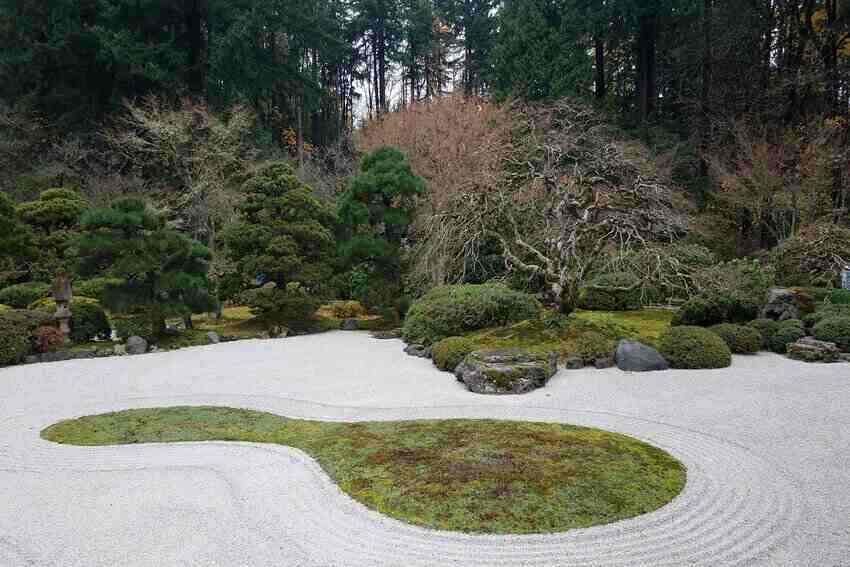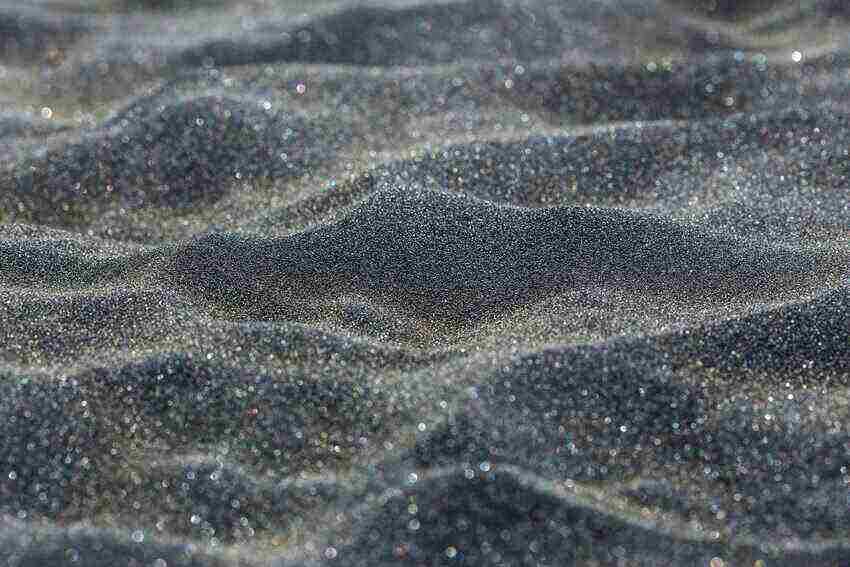The longevity of a garden plant mostly depends on the perfect recipe of soil. For that, most gardeners love to pick horticultural sand, for improving soil drainage and healthy plant growth.
But because of the unavailability of horticultural sands in different regions or their big price tag, people look for various options to build their gardens.
If you are one of them, you might be looking for a good alternative to the horticultural sand with builder’s sand. But still, there is a big question roaming around, can you use builders’ sand in the garden.
Yes, you can. This is the best replacement for horticultural sand for its availability and cheap price. Using builders’ sand in the garden, the drainage problem will also be solved quickly. Let’s talk about it in detail.
Everything You Should Know About Using Builder’s Sand in The Garden

What is Builders Sand?
Hearing the name, you may have guessed, that builder’s sand is used as a common material of mortar and cement mix in building materials. But this builder’s sand can also serve more value than just strengthening the garden walls. This coarse and gritty material is also great for improving aeration and drainage in the soil mix.
Where to Buy Builders Sand for Gardening?
Builders’ sand is readily available in most landscaping centers and hardware stores at a much cheaper rate. Even, you can find them in any garden supply shop, local Lowe’s, or tractor supply. Alternately, you can shop builders’ sand from Amazon.
Pros and Cons of Using Builders Sand in The Garden
Benefits of Using Builders Sand for Gardening
Why should you use builders’ sand? Most of the gardens have clay or rocky soils where plants can’t thrive freely. As this soil doesn’t absorb or drain the water fast, plants like herbs, vegetables, or flowers get clumsy.
For that, coarse sands are used to improve the drainage of gardens. But among all the available coarse sands builder’s sand is the cheapest and most easily available sand that you can easily opt for.
But don’t mix the fine-grained sand with builder’s sand, as they may worsen the condition of your garden rather than improve it.
Things to Keep in Mind While Using Builders Sand
There are a few circumstances where you should not add builders’ sand to your garden. We know builders’ sand lessens the ability of clay soil to hold moisture. But if the builder’s sand is mixed in more than the required ratio, the garden soil dramatically loses the ability to hold water.
For that, filling up a small area with sand is a good idea but mixing the whole garden with water is the worst thing you can do.
Can You Use Builders Sand in the Garden?
Undoubtedly, builders’ sand can be used for gardening. This coarse sand creates spaces in the soil thus improving drainage and aeration of the soil thus helping plants to grow better.
Besides soil improvement, builders’ sand helps are cheaper than other alternatives and also available everywhere. And you can buy small to large amounts of builders sand for the garden.
When to Use Builders Sand in The Garden?

If you are using the builders’ sand for the first time then getting confused about its usage is common. Nowadays, builders’ sand is used for many purposes in a garden or greenhouse. Here we will discuss some of them.
1. Seed Starting Mix
Seeds need exceptional soil moisture, are lightweight, and are well-draining to germinate. If exposed to too much water, seeds may rot or be vulnerable to disease as a damping-off.
According to Penn State Extension, you should mix one part of peat moss or coco coir with one part of the builder’s sand to create the exact soilless for annual flowers and vegetables.
Both the peat moss and sand are suitable to let sunlight enter through seeds to germinate (same as pepper seeds that are frozen). For making the process better, cover the seeds with a sand layer, not with compost or peat.
2. Sowing Small Seeds
The sand mix is not only important for the seed-starting mix. You may also use this builder’s soil to sow those seeds. Mix the tiny seeds with a few tablespoons of coarse sand and layer the whole mixture in your garden.
3. Potting Soil
Along with seeds, houseplants and larger plants also need good drainage. For that, builders’ sand has the best benefits for plants with shallow roots or larger plants.
If you want to make the perfect recipe for your pot plants, mix garden soil, peat moss, and builder’s sand in a 1:1:1 ratio. Before starting soak the peat moss and mix all three ingredients into an even-textured pot soil.
You can also add a little extra ingredient to get the perfect consistency you want. For cacti and succulents add more builder’s sand, and for vegetable flowers, a bit more peat moss should be added.
4. Propagating Cuttings
If you want to breed any flowers or herbs, coarse sand is the perfect soil for root cuttings. For making your experiment right, first cut a stem into 4 to 6 inches with a clean pair of scissors.
Remember to cut just above the node of the leaf to avoid hindering the mother plant. At least 2 sets of leaves should be left on the top of the cutting and strip the rest foliage to sit aside.
Next, fill a 2-inch garden pot with moist builder’s soil and make some holes in the sand with chopsticks or such sturdy things. Put the cutting inside the sand while leaving the rest foliage over the ground. Try to keep the cuts moist and in 4-6 weeks you will get a clone!
5. Improve Native Soil
Not all gardeners are lucky to have the perfect planting soil in their backyard. For them, improving the soil quality with additives like coarse sand and compost is necessary.
But the builder’s soil doesn’t work in every scenario. As said by MIgardener Luke Marion, you should only use sand when the compost level is high.
In his video, he explained that the drainage of clay soils will be worse by using sand, but they may also add aeration and air pockets to compost.
If you also have an inadequate level of nutrition in your garden, first put one thick compost layer and cover it with a sand layer. You can also use a broad fork or rototiller to loosen the plant soil.
6. Storing Root Vegetables
The last place where you will need to use builders’ sand is for storing roots. Vegetables like- beets or carrots should be buried in builders’ soil. For storing the vegetable roots, first gently clean the roots and cut off the tops.
After that, moisten the builder’s sand and begin organizing the roots according to size. Then place the same roots in different plastic tubs together in the middle of sand layers. Just ensure no roots touch each other.
Also, don’t put the damaged roots as it will affect the others. Even transfer the tubs into a dark, cool place where the temperature doesn’t fall to freezing and have the best harvest of vegetables all-around winter.
7. Loosening Heavy Soil
Clay-like heavy soils are inferior to drainage and in a few cases have zero porosity. Some roots even can’t penetrate in such heavy soils, and also can’t survive in maturity.
So for heavy soils, a considerable amount of sand mixture is recommended. According to experts, the top nine inches layer the sand for the best outcome. Also, spread some inches of sand into your garden and mix them by digging.
Alternatives to Builders’ Sand
In case you don’t find the perfect builder’s sand, there are a few alternatives that you can use for your garden.
1. Use Perlite or Vermiculite
Mostly used in potting soil, vermiculite and perlite have rock-based mineral particles. This rocky mix improves the drainage of the seed starting mix and also reduces compactness. To introduce more nutrients to the mixture, add vermicompost or finished compost.
2. Crushed Gravel
Another cheap alternative for horticultural and builder’s sand. Pea shingles or decorative stone chippings will also suffice, but avoid sea gravels for saltiness.
3. Tree Barks
Although tree barks are not as long-lasting as builders’ blocks, the large undecomposed bark pieces can change the game. But remember to add some more with old ones.
Also, add partially decomposed compost and other organic materials to improve drainage and nutrients.
Frequently Asked Question on Using Builders Sand in the Garden
Can I use builder’s sand to level my garden?
Some experts will say yes, some may say no. But there are several factors influencing this, so consulting with local gardening or landscaping experts is recommended.
How does builder’s sand improve drainage?
The coarse nature of builders’ sand provides more water space and airflow all over the ground. As it’s not absorbent, water won’t be trapped. Besides, it will improvise the water flow and make some room for your plant to grow.
How much sand should I add to my garden for the best results?
The best results only depend on the original composition of your garden soil and whether you want to put in some compost or potting soil. It will also depend on what plants you want to grow in your garden.
What ratio of sand-to-soil should I have for heavy clay content?
The general recommendation is to mix pure sand with clay mix in a 1:1 ratio. Also, many experts suggest mixing compost for extra nutrients.
What ratio is recommended for a clay/sand/compost mixture?
Here might be some debate on this matter but many experts suggest an equal ratio of soil, compost, and sand. This will provide the extra aeration and nutrients to thrive in your plants.
What amount of sand is right for loamy soil?
Loamy soils have low clay content so it needs less sand for them to be less dense or compressed. But the soil aeration recommendations vary, the general recommendations are a 1:4 ratio of builders’ sand and soil. Lastly, for ground covers or soil layering, 1-3 inches of builders is recommended.
How Do I Know the Exact Amount of Sand I Need?
For that, consult with your native gardening resources and experiment with different mixtures to know what works best for you.
Wrap Up
So, in the final words, for the question of “can you use builders’ sand in the garden”, the answer is, yes. You can use builders’ sand in your garden but only in the required ratio. Don’t make the mistake of putting excess sand in the garden.
But the equal ratio of soil, sand, and compost will do wonders in your garden. Happy gardening!

I’m Shofi, a passionate gardener and blogger. I have 10+ years of experience in gardening and hold certifications in horticulture and garden design. I share my knowledge and skills through my garden blog to inspire and educate others on the joys of gardening. I try to provide valuable information and create a community for gardeners of all levels to connect and learn. My ultimate goal is to inspire others to start their own gardens and connect with nature.
